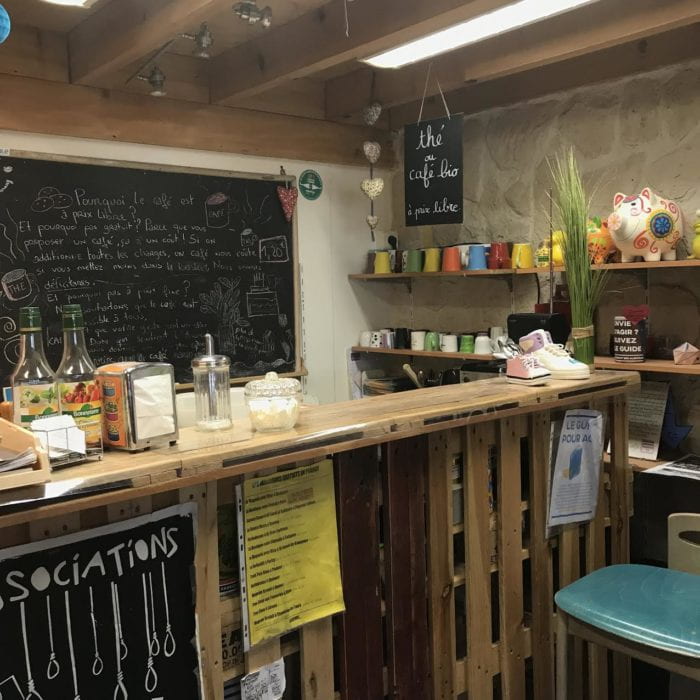Shopping without money, fashion without waste – exploring alternatives to consumer fashion in Paris
Salut tout le monde! Welcome to Paris, where as I write, Fashion Week is dominating headlines with its twice-yearly, seven-day celebration of brand-new clothes as designers display their new collections for the next two seasons. It’s no exaggeration to say that this week in Paris sets the tone for the whole world for the next six months in fashion! Further, Paris Fashion Week is the symbol, par excellence, of an industry which hinges on the constant novelty of high-end trends, which are then translated to the cuts, colors and shapes of the high street fashion we buy and wear. This fixation on novelty is really nothing new – mass produced fashion began to appear on high streets in the 1960s. However, the cycle created by such demand for ever-changing, always-new clothes is wreaking havoc on our wallets, our bulging wardrobes, and most importantly, the health of our planet.
The global fashion industry produces 20% of all global wastewater, and 10% of all global carbon emissions, with a bigger carbon footprint than the whole of the European Union put together. If we’re going to fight the ongoing climate crisis, it’s clear that we all need to take a closer look at our wardrobes, and understand the processes behind our clothing consumption which play a dangerous role in harming both our planet and our fellow people.
Here in Paris, I’ve been really enthused by several growing initiatives designed to provide greater transparency, accountability and legal regulation surrounding the fashion industry, ultimately seeking to reduce the carbon footprint of our clothes on a global scale. It’s important to remember that “we can’t consume our way to sustainability” (Ron McLinden) and that the waste hierarchy begins with the need to ‘reduce’ our consumption, before we reuse and recycle any products purchased. With this in mind we can not only make the most meaningful consumer choices, but take an active role in effecting change by demonstrating that industry which contributes to the climate crisis cannot go unchallenged. Paris legislators are aiming to establish a law forbidding the destruction of all unsold consumer goods by the year 2023 following a hugely successful initiative which mandates the donation of all unsold food. This objective has enormous potential for change, especially with regards to our clothes – when unsold clothing cannot simply be discarded and destroyed, how then will we handle the influx of available garments? Not only will clothing donations be an incredible gain for those facing poverty, but I hope that it will keep clothes out of landfills and incinerators, and encourage a sharp decline in the overproduction of new garments, consuming less of our earth’s natural resources.
However, 2023 is four years away yet, and one grassroots organization aiming to directly tackle our problem with consumer fashion, and its environmental and human costs, is the team behind the Boutique Sans Argent (The Shop Without Money). The project, started in 2013, aims to tackle the issues of excess and waste while providing people with items they may need, and giving clothes headed for the landfill a new lease of life. They also aim to change the way their customers approach consumerism itself, removing the symbol of the price tag as an indicator of an object’s perceivable value – when an item is simply there to take, we examine whether or not we truly want – or need – to take it. In fact, the mission statement of the Boutique specifically states the organization’s goal to eliminate the phenomenon of the ‘impulse buy’ and encourage consumers to think carefully about the necessity of items, including clothes, when deciding whether to accumulate them. While reading about La Boutique Sans Argent online, I wasn’t entirely sure how one small store could change the experience of shopping so fundamentally, and challenge us to think differently about the place of consumerism in our lived experience – so I decided to head to the 12e Arrondissement, to visit them and find out!
For many of us, browsing rails of clothes in stores or online is a regular weekend pastime – particularly when brands seem to constantly advertise new stock, or unmissable sales with bargains threatening to disappear within hours! Last Saturday, however, my shopping experience at the Boutique Sans Argent provided me with a radically different perspective on the process of making a consumer purchase, which extended powerfully to inform my understanding of our fashion consumption in the climate crisis.

Cafe in Boutique Sans Argent (The Shop Without Money)
When I arrived at the store, I was instantly struck by its friendly atmosphere – while the store was busy, volunteers and customers were chatting, laughing and browsing the items on display. While the project provides important charity aid for those in need of essential items, it’s accessible and welcoming to all, and aims to provide items solely on the basis of need, no matter the individual’s circumstances – as volunteer Nicole welcomed people, and explained how the store works, it was evident how much care the team had taken in sharing their message and encouraging their need- and donation-based model of sharing, which hinges on donating generously, and consuming responsibly. This system of mindful consumption certainly isn’t the the only solution we need to halt the climate emergency in its tracks, but the notion of a radical alternative to buying ‘new’ can only help to make a powerful statement to demonstrate that the supply of new fashion outweighs its demand, and that we’re ready to make big changes to protect our planet- legislators urgently need to catch up.